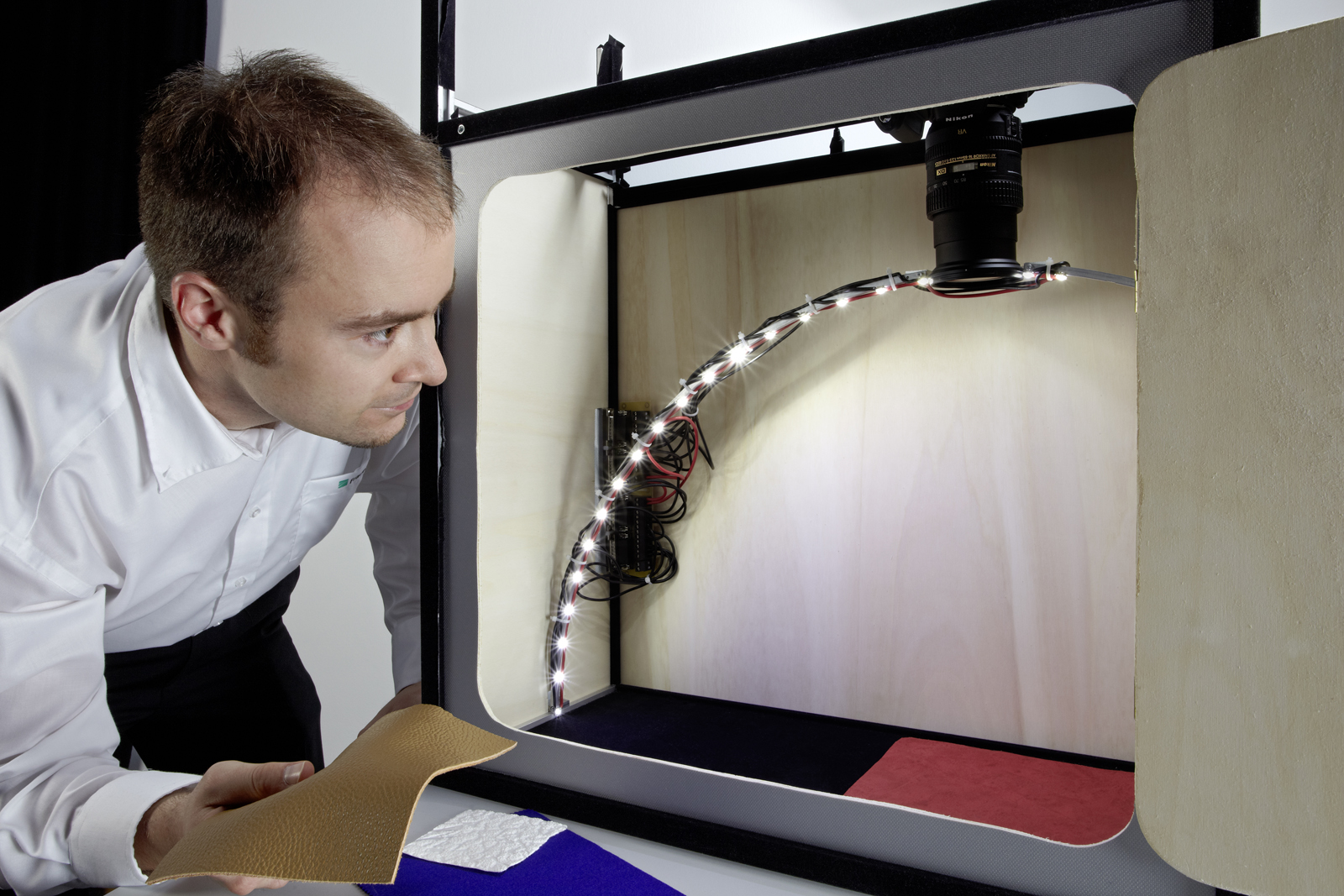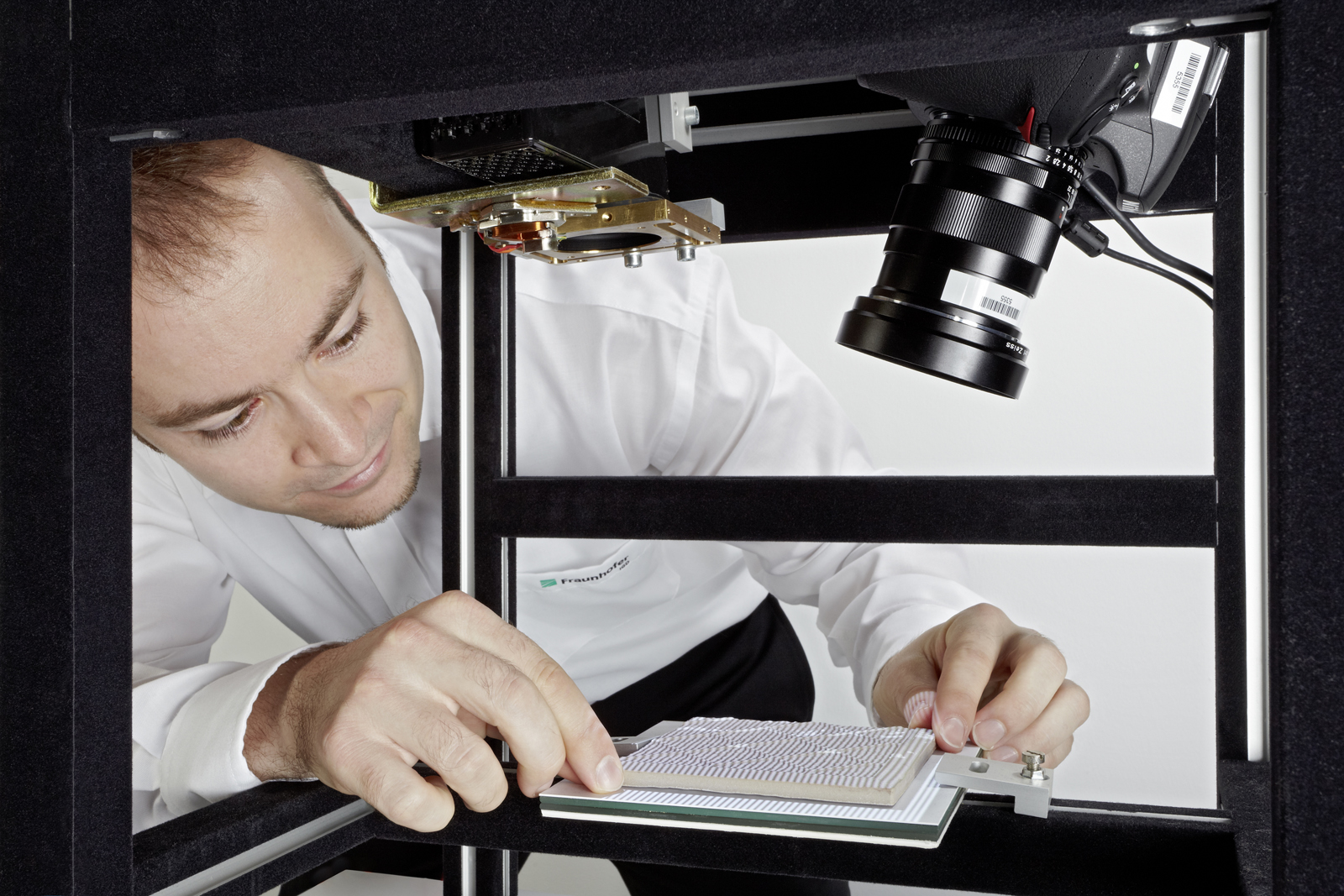Simulating real-world surfaces
These days, cars are developed on computers, and to assist with this, designers want processes which generate realistic surfaces such as seat covers. Researchers have now developed high-resolution scanners which copy objects and fabric samples in a few minutes, converting them into virtual models. The light effects are startlingly realistic.
When buying a car, customers are not just interested in its fuel consumption. They rather turn their attention to the car’s appearance. The interior fittings should have a quality look, the pattern on the seat covers should be subtle and understated and the leather-look dashboard should add a sense of luxury. That is why designers want to know at an early stage how a piece of fabric or imitation leather will look in the new car cockpit. Models used to be manufactured by hand, but that was time-consuming. And although computer simulation is faster, it takes time as well: real-world objects must first be scanned at high resolution and then translated to the virtual world. Researchers at the Fraunhofer Institute for Computer Graphics Research IGD in Darmstadt are now hoping to accelerate this process. They have developed two scanners which capture images of real objects with micrometer precision and use the data to generate deceptively lifelike virtual images. The first device, the HDR-ABTF scanner, is specifically designed to capture images of materials such as textiles and leather, lit from different directions, precisely and especially quickly. Computers can then be used to simulate how an object – for instance a car seat – covered in that material will look in changing light conditions. The second device, the meso scanner, captures high-resolution images of three-dimensional objects. Unlike conventional systems, it even records finest surface details with yet unmatched precision.
Both scanners have been developed from established processes which are more expensive or which take longer. “For industrial applications, though, we need fast and affordable devices with high resolution,” explains Martin Ritz, a developer at Fraunhofer IGD. This is what the HDR-ABTF scanner delivers. A single-lens reflex camera installed in the device looks down on the object from above. The material is lit successively by several LEDs arranged in a quadrant arc, so that the surface is lit from various different angles and photographed in varying light conditions. The end result is a series of exposures for each light direction, which can then be integrated on a PC to produce high-resolution HDR images. A vehicle designer can then combine the image data with the computer model of a car seat and observe the material’s behavior when lit from any angle. There are already similar processes that use multiple cameras and considerably more light sources, but working with the equipment developed by Fraunhofer IGD is both simpler and faster. Within the period of just ten minutes, a new material can be scanned and translated to a virtual model.
The meso scanner captures images of small three-dimensional objects. Conventional 3-D scanners project a relatively coarse pattern of stripes onto an object and the software infers the three-dimensional shape from the distortion of the stripes. This innovative new scanner instead projects a much more detailed pattern of black and white stripes onto the object, each of which is just about a third of a millimeter or so across. Using a special lens in front of the projector, this pattern is moved across the object with sub-pixel accuracy, which is to say it is shifted in individual steps of 1/25 of a pixel or less. This means that the object is scanned in much greater detail than before, achieving high resolution. Any hollows or wrinkles can be recorded with a depth measurement which has an accuracy of around 30 micrometers – which is two to three times more accurate than without the lens-shifting system.
As Ritz points out, “The meso scanner isn’t just interesting for car development. There’s also scope for museums to use it to scan rare exhibits such as jewelry or coins with high precision.” Another possible application for the device would be in the computer gaming industry. Researchers will be showcasing the initial prototypes of the new scanners at the booth of the Fraunhofer Additive Manufacturing Alliance at the Euromold trade fair (Hall 11, Booth C66a) from November 29 to December 2, 2011 in Frankfurt am Main.

